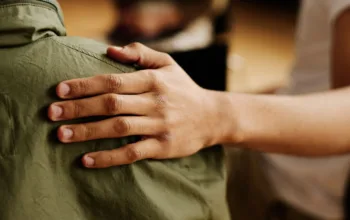Phone bans are on the rise, but experts say they have their limits.
In Akron, Ohio, teens and tweens show up to school every day with their homework, their textbooks … and a special magnetic pouch that renders their smartphones useless during the day.
The Akron schools are part of a growing movement across the US and Europe to ban phones in schools or require them to be locked up in pouches made by a startup named Yondr. School districts in at least 41 states have bought the pouches in recent years, a response to behavior issues as well as concerns about students’ mental health and learning, which have ramped up since the pandemic.
“The results for us were just a game-changer,” Patricia Shipe, president of the Akron Education Association, which represents teachers and other educators in the district, told me. Fights in the schools have decreased since the bags were introduced to all middle and high schools in 2022, and kids report engaging with their friends more.
Many districts have adopted the pouches in response to very specific concerns. In Akron, for example, students were coordinating fights to post on social media, Shipe said. But the move to keep phones out of schools also comes in the midst of a bigger debate about whether the devices, and social media in general, are having dire effects on childhood development and the lives of teenagers.
So what is the place, if any, of cellphones in schools? Are Yondr pouches a path toward happier kids and more productive classrooms? Let’s break down the research.
What phone bans can do
Cellphone bans aren’t a new phenomenon.
Some school districts began banning the devices as far back as the ’90s. New York City, the country’s largest district, issued a ban in 2010, though it was later reversed. Schools in several European countries, including France and Spain, also banned phones in the 2010s.
But the issue has been heating up since the pandemic, as have Yondr pouches in particular. The company has posted a tenfold increase in sales since 2021, according to the 74.
Some district officials say the pouches make bans easier and less time-consuming to enforce because kids physically can’t access their phones until the pouch is unlocked with a special device at the end of the day.
Like Akron, some districts have adopted the pouches to keep kids from engaging in bad behavior with their phones during the school day. “Teenagers were taking videos of each other on their phones,” Diego Ochoa, the superintendent of the San Mateo-Foster City School District in California, told NBC. “These were videos of kids in locker rooms. These were videos of kids bullying each other.”
San Mateo-Foster City brought in Yondr pouches in 2022, and Ochoa says they have been “an unquestioned success.”
Restricting phones so that kids don’t use them to start or document fights makes sense, experts say. One study in Spain found a reduction in cyberbullying in regions that banned phones. Confusingly, however, a 2016 survey of US principals found that schools with bans actually had higher rates of cyberbullying.
There’s also reason to believe that using cellphones in class is bad for learning. Studies on doctors, nurses, and others have shown that “multitasking during learning interferes with the long-term processing and retention of what you learn,” said Megan Moreno, a professor of pediatrics at the University of Wisconsin Madison. Some research suggests that curbing smartphone use in the classroom could help students stay focused on their lessons.
A 2016 UK study, for example, found improved test scores at high schools that instituted bans. A Norwegian study, meanwhile, found that middle-school smartphone bans were associated with higher grades for girls but not boys (perhaps because boys spent less time on phones to begin with).
What phone bans (probably) can’t do
When it comes to mental health, the picture is somewhat murkier.
Young people today appear to be in the midst of a frightening spike in psychological distress: 13 percent of teens reported having a major depressive episode in 2019, up 60 percent from 2007, according to the New York Times. Suicide rates and ER visits for anxiety and self-harm also rose during the period.
Many people have argued that smartphones and social media are at least partly responsible for these disturbing trends. There’s also a broader concern about the way that having constant access to an extremely distracting and absorbing handheld machine is changing childhood. Psychologist Jonathan Haidt and others have argued that phones are replacing hanging out with friends, which is harming social development and contributing to loneliness.
To the narrower concern, there is no hard evidence to show that social media harms kids’ mental health, Moreno said.
Parents are often concerned about the way social media encourages teens to compare themselves to peers and influencers alike. But it’s unclear whether TikTok is any worse in this regard than TV shows and Seventeen magazine were for generations past. “Social comparison is real, and media is a place where it happens,” Moreno said. “That’s not necessarily new for social media.”
Meanwhile, for LGBTQIA+ teens and others from marginalized groups, “social media can be a place where they find acceptance and peer connection within their identities,” Moreno said.
Andrew Przybylski, a professor of human behavior and technology at Oxford, told me that there’s also no evidence that smartphones overall are especially dangerous for mental health — and that demonizing them is “not very helpful for me as a parent.”
But restrictions on phones in schools have their place, Przybylski said. “It’s pretty noncontroversial that you don’t want kids to be distracted by phones or teachers to be distracted by their phones.” But when it comes to larger issues of mental health and well-being, he argued, phone bans are “a simple solution that can’t possibly work.”
To address those larger issues, we have to look at everything going on in young people’s lives today, from the impact of the pandemic to unrealistic academic expectations to climate change, Moreno said. When it comes to mental health, she explained, it’s about “focusing on teens, not on the devices.”
This story appeared originally in Today, Explained, Vox’s flagship daily newsletter. Sign up here for future editions.



